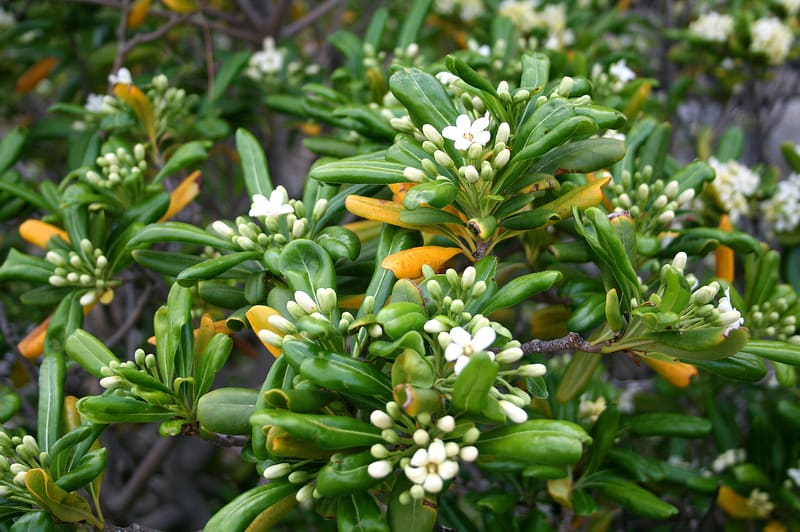Japanese Pittosporum, Mock Orange, Australian Laurel, Japanese Cheesewood
Pittosporum tobira

🌿 Morphology
🌞 Growing conditions
🌍 Origin and family
🌾 Uses
Warning: Despite the care taken in writing this sheet, it is essential to cross-reference sources before using or consuming any plant. When in doubt, consult a qualified professional
Permaculture uses
Primarily used as an ornamental shrub or hedge in permaculture designs. Provides evergreen foliage for privacy screens, windbreaks, and habitat for beneficial insects. The fragrant flowers attract pollinators. While not typically considered edible, some sources suggest the resin has limited traditional uses, but caution is advised due to potential toxicity. It's a robust plant suitable for Mediterranean climates and can be used in xeriscaping due to its drought tolerance. Some cultivars offer variegated foliage for aesthetic diversity.
Permapeople description
Pittosporum tobira is a species of flowering plant in the Pittosporaceae family. It is known by several common names, including Japanese pittosporum, mock orange, and Japanese cheesewood.
Botanical description
Pittosporum tobira is an evergreen shrub or small tree that reaches heights of 3-10 meters. Its leaves are thick, leathery, glossy, and obovate, measuring 5-10 cm long. The flowers are creamy white, highly fragrant, and arranged in terminal umbels. They mature into globose capsules containing numerous seeds embedded in a sticky resin. The bark is gray and smooth when young, becoming rougher with age. The plant is native to Japan, Korea, and China.
Companion planting
Generally considered a good companion plant, as it does not have any known antagonistic relationships with other plants. Its dense foliage can provide shelter and support for climbing plants. Avoid planting near plants that require highly acidic soil, as Pittosporum tobira prefers slightly alkaline to neutral soil.
Propagation methods
Propagation is typically achieved through seeds, cuttings, or layering. Seed propagation requires scarification to improve germination rates. Cuttings, especially semi-hardwood cuttings taken in late summer, root readily. Layering involves bending a low-lying branch to the ground and covering it with soil until roots develop.
History and traditions
Traditionally, Pittosporum tobira has been used in Japanese gardens and landscaping for centuries, valued for its ornamental qualities and fragrant flowers. It has been introduced to various parts of the world as an ornamental plant. Some cultures have used the resin for medicinal purposes, although detailed historical uses are scarce and caution is warranted.
Usage calendar
Flowering typically occurs in spring (April-May). Seed collection takes place in fall. Planting is best done in spring or fall. Pruning can be done in late winter or early spring to maintain shape and size.
